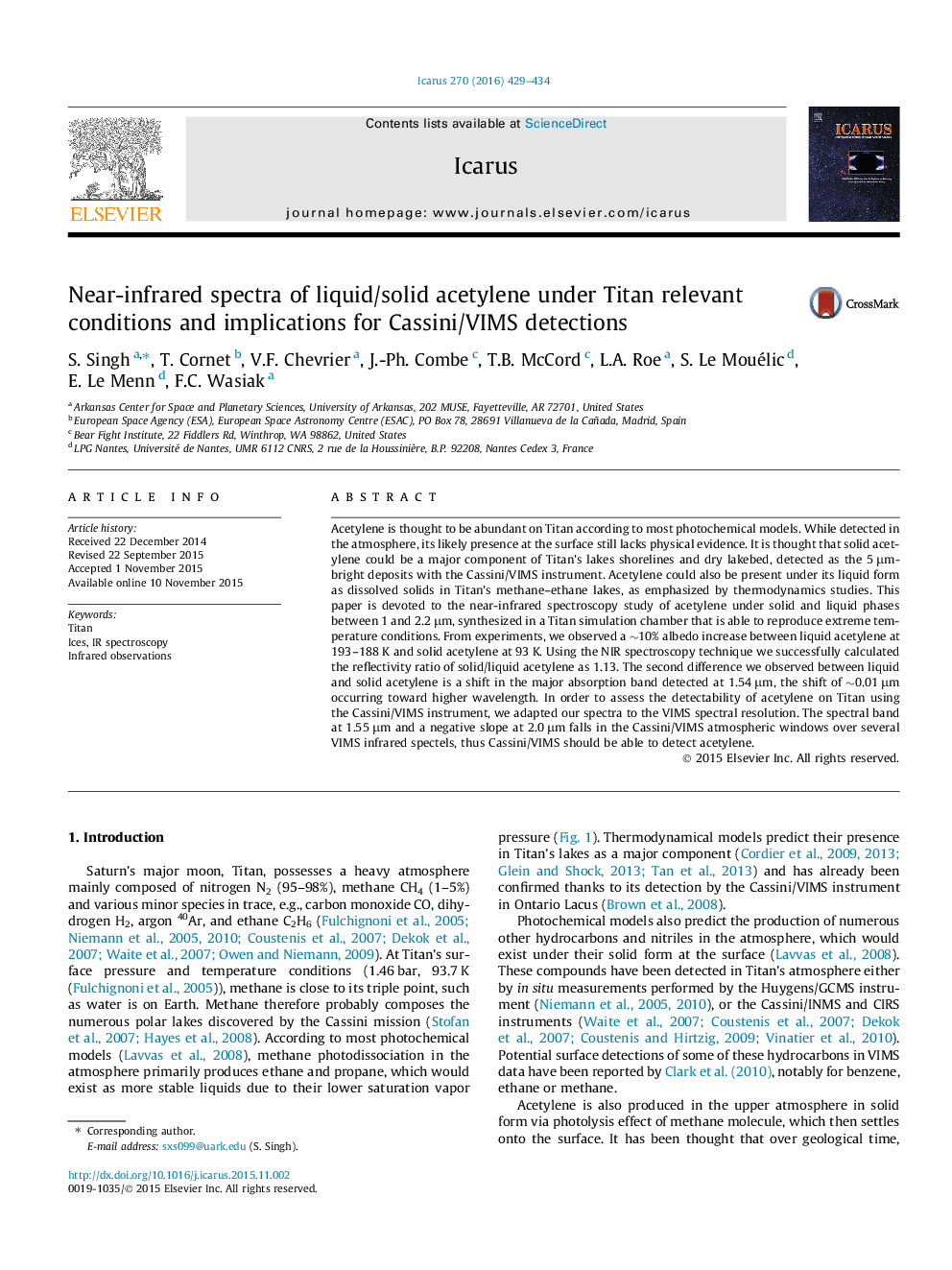| کد مقاله | کد نشریه | سال انتشار | مقاله انگلیسی | نسخه تمام متن |
|---|---|---|---|---|
| 1772953 | 1523520 | 2016 | 6 صفحه PDF | دانلود رایگان |
• This is the first publication about the short-wavelength part of the spectrum of solid and liquid acetylene.
• We observed variations of albedo and absorption bands between different phases.
• The deepest acetylene band in the investigated wavelength range from 1.2 to 2.2 μm lies within the atmospheric window at 1.6 μm.
Acetylene is thought to be abundant on Titan according to most photochemical models. While detected in the atmosphere, its likely presence at the surface still lacks physical evidence. It is thought that solid acetylene could be a major component of Titan’s lakes shorelines and dry lakebed, detected as the 5 μm-bright deposits with the Cassini/VIMS instrument. Acetylene could also be present under its liquid form as dissolved solids in Titan’s methane–ethane lakes, as emphasized by thermodynamics studies. This paper is devoted to the near-infrared spectroscopy study of acetylene under solid and liquid phases between 1 and 2.2 μm, synthesized in a Titan simulation chamber that is able to reproduce extreme temperature conditions. From experiments, we observed a ∼10% albedo increase between liquid acetylene at 193–188 K and solid acetylene at 93 K. Using the NIR spectroscopy technique we successfully calculated the reflectivity ratio of solid/liquid acetylene as 1.13. The second difference we observed between liquid and solid acetylene is a shift in the major absorption band detected at 1.54 μm, the shift of ∼0.01 μm occurring toward higher wavelength. In order to assess the detectability of acetylene on Titan using the Cassini/VIMS instrument, we adapted our spectra to the VIMS spectral resolution. The spectral band at 1.55 μm and a negative slope at 2.0 μm falls in the Cassini/VIMS atmospheric windows over several VIMS infrared spectels, thus Cassini/VIMS should be able to detect acetylene.
Journal: Icarus - Volume 270, 15 May 2016, Pages 429–434
